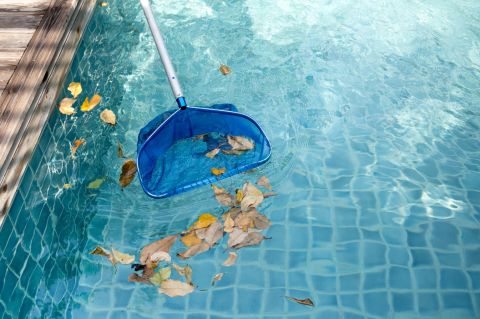4 Easy Tips You Need for Applying Swimming Pool Paint
| |
Founded over 23 years ago, TA Paints provides high-quality paints and coatings for industry, trade and domestic users. Our team has extensive knowledge and a range of experience in the paint industry and we know the ins and outs of swimming pool paint and how to paint a swimming pool.
High-quality swimming pool paint is durable and chlorine resistant. However, before diving into the painting process, it is crucial to properly prepare the pool’s surface. This will help to ensure a smooth and long-lasting finish. Taking steps before painting your swimming pool can help ensure a professional-looking finish that will last for years to come.
So, let's dive in and discover how to prepare your swimming pool for the summer season! With proper maintenance and care, you can enjoy a sparkling and refreshing pool all season long.
Step 1: Getting The Pool Ready
The first step to achieving a spotless, clean-looking pool is preparing it. To do this, you need to drain the pool. This can be challenging but hiring a professional to do this for you can make a huge difference.
The next part of step 1 is to clean up all the dust, debris and unwanted pool flocculant. Here are some of the tools you may need:
- Vac hoses and poles
- Automatic swimming pool cleaner and vacuum
- Swimming pool net
- Pool brushes
- Chemical cleaner
Once you’ve gathered all the right tools for the job, vacuum the pool and remove any debris sitting on the pool floor. Then clean the filter. Once you’ve done these, you can move on to the next step.
Step 2: Fix Any Cracks
Any cracks in the pool must be filled and ground out and refilled with an appropriate filler. Once the crack is filled, sand the surface down to ensure it’s nice and smooth.

Step 3: Priming the Pool
Many people ask the question, “what paint do I use for a swimming pool?” Well, before you use paint, you need to establish what material the pool is made from.
Applying a primer is essential to any bare fibreglass substrate. It allows the paint to adhere better to the surface, as well as offering a durable finish with high protection in areas where excessive chemical & environmental resistance is required.
If applying to bare concrete or rendered concrete, we recommend you thin the first coat by 20% with the appropriate thinners. This is to ensure the paint impregnates the concrete, acting as a primer/sealer.
If your pool is already painted there is no need for a primer. We recommend you clean the surface and lightly abrade to give a good key for next coat of paint to adhere to.
Once you’ve done this, start painting your pool with your epoxy fibreglass primer.
Step 4: Painting the Pool
Many people also ask, “what is the best epoxy paint for swimming pools?” and there’s no straight answer, as it depends on your pool type.
There are 2 main types of pool paint, epoxy or rubber-based. Rubber pool paint offers exceptional chemical resistance and flexibility, meaning it won’t crack when warped. Epoxy swimming pool paint, on the other hand, provides a hard wearing, yet inflexible, coating when fully cured.
In order to paint the pool, you can use a roller, brush or spray application, making sure you coat everything thoroughly.
We recommend that you do not paint the swimming pool in direct sunlight as it can keep the paint soft by solvent entrapment, where the top coat cures and underneath stays soft. Make sure you have good airflow and ventilation, you can ensure this by using a fan. The pool must be left for 7 days before refilling.
Swimming Pool Paints
At TA Paints, we’re dedicated to helping our customers. From providing paint developed by our team of chemists and manufactured in the UK to providing all the information you need to complete your next project, we’re here to assist you.
Shop swimming pool paints today, or contact the paint experts with your questions.



